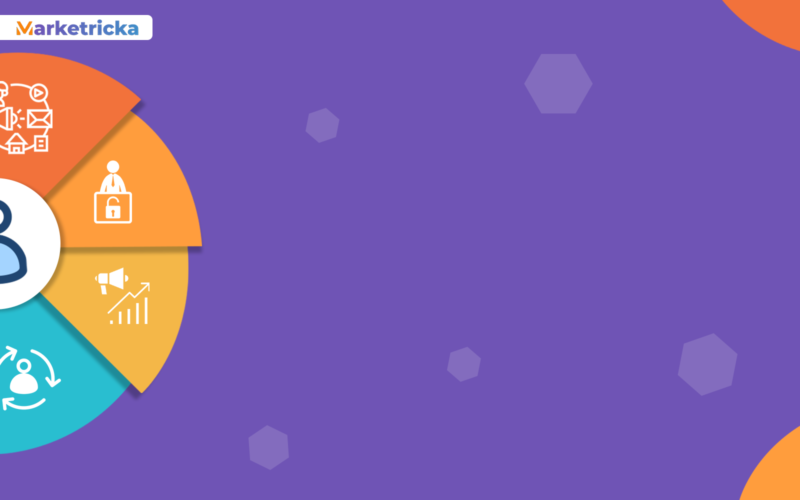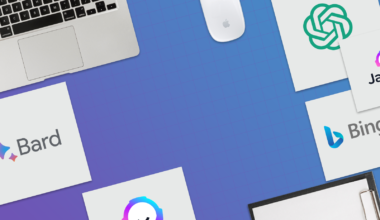Summary:
Discover the importance of customer segmentation and how it can help businesses reach out to a large audience to increase conversion rates. This approach empowers businesses to formulate strategic decisions by categorizing customers into various clusters, encompassing demographics, behaviors, preferences, and more.
Engaging with the maximum number of people at the right time and with the right information is the ideal approach to effective marketing. This includes sending personalized messages/emails to the targeted customers.
But what if I told you that it’s an old-school strategy, focusing on a single group from a large audience? Yes, it’s true!
We have entered an era of smart living and smart approaches.
This means aiming at different customer groups with specific content can yield result-oriented processes in modern marketing. But how is this possible?
Through customer segmentation models.
90% of customers will increase their spending with companies that offer personalized service.
Customer segmentation helps you and your business to understand the needs of various customer groups through preferences, likes, dislikes, recently viewed products, and many more factors.
What is The Customer Segmentation Model?
Customer segmentation is the process of dividing a large group of customers into smaller groups based on various characteristics, such as age, region, and more. This process allows businesses to gain a deeper understanding of the diverse needs of their customers. Additionally, it empowers them to make strategic decisions tailored to each customer segment.
Example 1: B2B Brand – Software Solutions
Imagine that you’re a B2B brand providing software services to various industries. In this scenario, your customer segments should revolve around the specific needs and challenges that businesses in different sectors are facing.
Example 2: B2C Brand – Fitness Products
Imagine you’re a B2C brand offering exceptional fitness products. In this case, your customer segments should be based on factors like age and gender rather than general demographics.
Benefits of Customer Segmentation Models
Customer segmentation is renowned for its ability to offer insights into customers’ requirements. By considering factors such as age, gender, preferences, and behavior, businesses can introduce customized messages and product details that cater to the distinct needs of different customer segments.
Targeting a mass market can entail a risky marketing strategy. Customer segmentation is crucial for reaching groups of customers with specific needs and wants.
This overall process benefits businesses in several ways. Here is a list of key reasons why businesses should leverage the capabilities of customer segmentation models:
1) Increase Marketing Effectiveness:
Classifying a large group into more manageable segments aids in making strategic decisions, facilitating the identification of a targeted audience, and enabling the launch of customized campaigns that cater to the specific wants of each group.
2) Unlock New Business Opportunities:
When creating multiple clusters within a large segment, there is a possibility of identifying a new market area with minimal competition. This discovery could potentially lead to a shift in your marketing strategy’s focus and intended audience.
3) Better Distribution Approach:
Gathering information based on customer preferences and behavior can lead to insight. Armed with this valuable data, businesses can intelligently shape their product distribution strategies, ensuring that products are sold at specific outlets.
4) Easy Customer Retention:
Through effective segmentation, the marketing department can easily identify potential customers who warrant focused attention. This allows the business to cater to its needs optimally, employing personalized emails and communication strategies.
Different Customer Segmentation Models
Marketing specialists have defined various customer segmentation models; however, we intend to focus on the more common yet highly feasible customer segmentation models.
1) Demographic Segmentation
Classification of customers based on statistical characteristics that they owe. This is the most basic customer segmentation that can easily fit into any business marketing strategy. Moreover, it is quite famous among customers as well.
As we know, a client can be an individual or a business, i.e., you can offer products or services in B2C and B2B. For both, the demographics are quite different. Let’s have a look!
B2C (Business to Consumer):
- Age
- Gender
- Race
- Martial status
- Income
- Education
B2B (Business to Business):
- Business Lifecycle
- Industry type
- Market Capital/Valuation
- Delivery Model
- Marketing Strategies
- Targeted Audience
E-commerce and fashion are two major examples of B2C (Business to Consumer), and IT solutions and service providers are the prime examples of B2B (Business to Business).
2) Geographic Segmentation:
A geographic customer segmentation model that works under the marketing strategy for a target product or service based on where the consumers reside. This division can be a region, city, country, area, or any physical location.
In this customer segmentation model, businesses divide consumer groups based on their geographical location. As we know, consumers’ preferences and habits are often influenced by their place of residence.
Moreover, their lifestyle is also shaped by their proximity to certain locations. For example, if they reside in Switzerland, it becomes easier for eCommerce platforms to display clothing suitable for Swiss residents, given the colder climate.
3) Psychographic Segmentation:
In the psychological customer segmentation model, classification occurs based on psychological characteristics such as lifestyles, values, interests, and attitudes. This segmentation model enables the marketing team to create a significant impact while engaging with multiple customers.
This approach helps save time, money, and other resources, making it easier to relate to and engage with customers.
Why use psychographic segmentation:
- Get an understanding of customer needs
- Targeted marketing
- Customer loyalty
- Competitive advantages
- Resource allocation
3) Psychographic Segmentation:
In the psychological customer segmentation model, classification occurs based on psychological characteristics such as lifestyles, values, interests, and attitudes. This segmentation model enables the marketing team to create a significant impact while engaging with multiple customers.
This approach helps save time, money, and other resources, making it easier to relate to and engage with customers.
4) Behavioral Segmentation
The behavioral segmentation model is a marketing strategy that breaks targeted audiences down based on actions, needs, behaviors, and usage patterns. This includes how users interact with particular services or products and how frequently they use them. Also, analyze the purchase decision and observe the overall actions.
The main objective of behavior segmentation is to:
- Understand purchasing patterns
- Optimize product and service offerings
- Enhance customer retention
- Improve customer experience
- Allocate resources efficiently
Divyesh Savaliya
As an enthusiastic content writer by profession and an eager researcher, I delve into diverse subject matters to create the best SEO-optimized content pieces ready to captivate audiences







2 comments
Comments are closed.